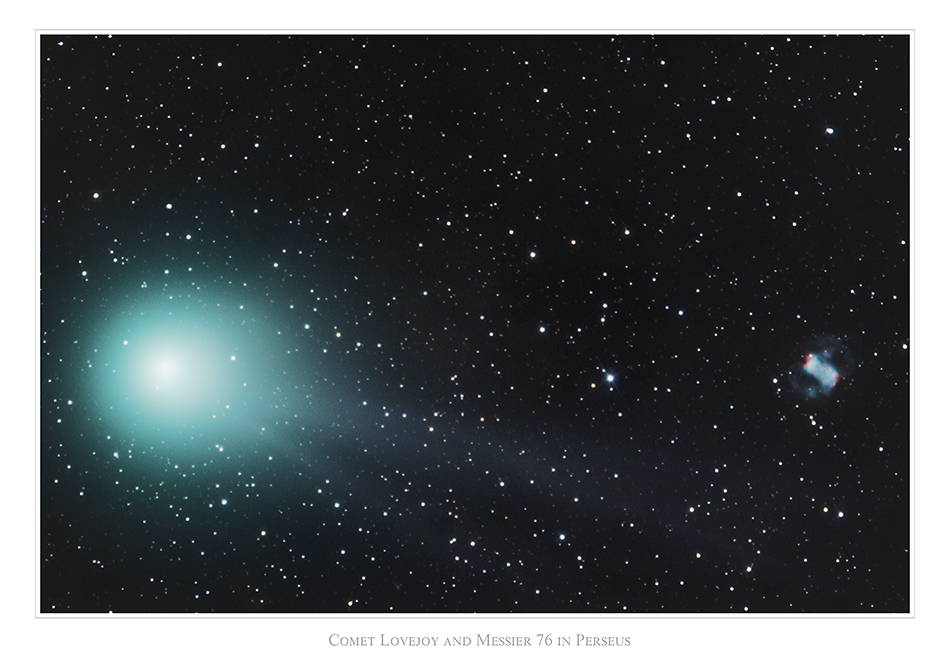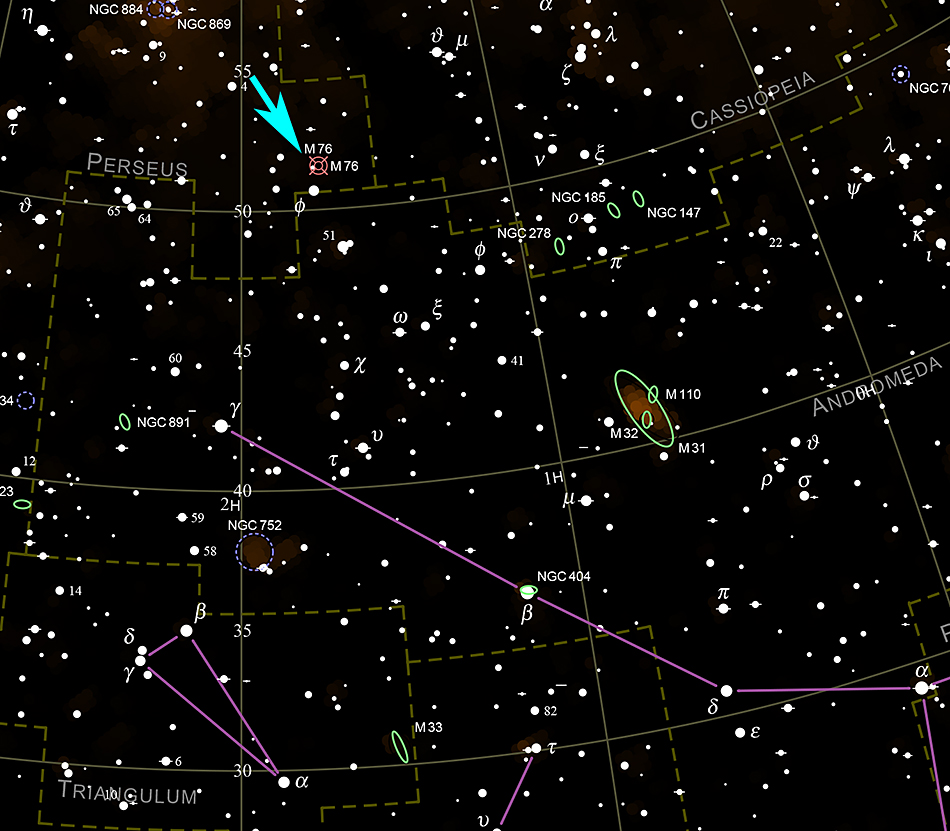The planetary nebula Messier 76 ("Little Dumbbell Nebula", NGC 650 / 651) in the
constellation Perseus on February 20, 2015. On that night, a close encounter between Messier 76 and Comet Lovejoy (C/2014 Q2 Lovejoy)
took place - at least as seen from Earth: Comet Lovejoy was 173 million kilometers from Earth (10 light minutes) and 200 million
kilometers from the Sun (thus the comet was moving between the orbits of Earth and Mars within our solar system) while Messier 76 is
outside our solar system but still within the Milky Way, 3400 light years from Earth. Comet Lovejoy was discovered by Australian amateur
astronomer Terry Lovejoy in August 2014. The comet appears to have an orbital period of 11'000-14'000 years and made its closest approach
to the Sun on January 30, 2015 when it was 193 million kilometers from the Sun. On February 20, Comet Lovejoy could be seen by the naked eye as a
faint mag 6.3 "star". The planetary nebula Messier 76 was discovered by the French astronomer Pierre Méchain in 1780 (source: Wikipedia).
Seventeen 3 minute exposures at ISO 800 with no dark frame subtraction were stacked with Deep Sky Stacker (resulting in a 37 min exposure)
and further processed in Photoshop.
|
Equipment: Canon EOS 450D Baader modified camera, TeleVue Paracorr Type II coma corrector,
16" f/4.5 "Ninja" dobsonian telescope riding on a dual-axis Tom Osypowski equatorial platform,
Lacerta MGEN autoguider, Lacerta off axis system (field of view comparison:
image of the moon with the same equipment).
|










